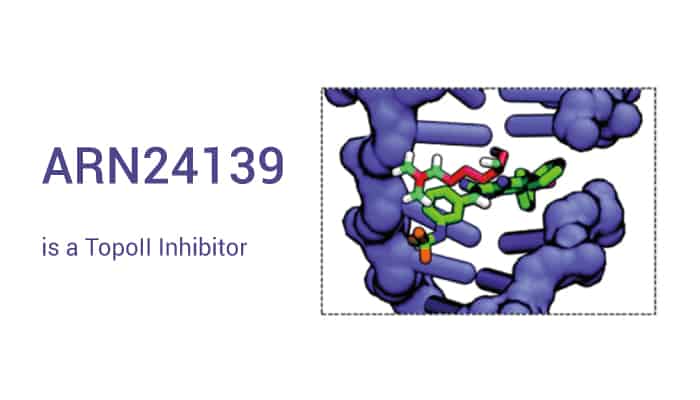Topoisomerase II is a ubiquitous enzyme in all branches of life that alters DNA supercoils and breaks double-stranded DNA fragments during processes such as replication and transcription. Eukaryotic Topoisomerase II functions as a homodimer and requires ATP and divalent metal ions for overall catalytic activity. It interconverts different topologies by creating transient double-strand breaks in the DNA backbone, transporting individual double helices through the nucleic acid gate, and resealing the break. All organisms encode at least one type II topoisomerase. Lower eukaryotes encode a single type II enzyme, whereas vertebrates express two isoforms of topoisomerase II, topoIIα and topoIIβ. Topo IIα is mainly active during DNA replication and mitosis, while topo IIβ functions in the transcriptional regulation of gene expression.
ARN24139 is a TopoII Poison with Promising Antiproliferative Activity.

Topo II is a multifunctional molecular machine. It can adjust and meet the demands of a changing cellular environment. Topoisomerase II is the target of many widely used anticancer drugs, and many Topoisomerase II inhibitors are also important for treating or preventing cancer. These inhibitors work by blocking topoisomerase II-DNA binding, rendering cells incapable of all essential functions of the enzyme, including structural functions. Alternatively, it deprives the cell of topoisomerase II of its catalytic function by blocking ATP binding.
ARN24139 is a topoisomerase II (topoII) inhibitor with an IC50 of 7.3 μM. It can inhibit cancer cell proliferation and has good in vivo activity. Moreover, ARN24139 has antiproliferative activity on DU145, HeLa, and A549 cells with IC50 values of 4.7, 3.8, and 3.1μM, respectively.
In conclusion, ARN24139 is a potential topoisomerase II (topoII) inhibitor and can be used in cancer research.
References:
[1] Jose M Arencibia, et al. J Med Chem. 2020 Apr 9;63(7):3508-3521.
[2] Kendra R Vann, et al. Biochemistry. 2021 Jun 1;60(21):1630-1641.